L1 Introduction to Cell Biology
一、Cell Theory
Discovery of Cells
1. 1665 - Robert Hooks
In 1665, Robert Hooke saw a network of tiny box-like compartments that he described “… much like a Honey-comb, but that the pores of it were not regular. . . . these pores, or cells, . . . were indeed the first microscopical pores I ever saw, and perhaps, that were ever seen, for I had not met with any Writer or Person, that had made any mention of them before this.

He called these little compartments “cellulae”, a Latin term meaning little room.
Our present-day term therefore is: “cell”.
In fact, these were cell walls, left by dead cork cells…
2. ~1670s - Antoni van Leeuwenhoek
Improvement of technology: the quality of lenses

Leeuwenhoek was the first to observe & describe single-celled organisms (“animalcules”).
First to record observations of muscle fibers, bacteria, spermatozoa and blood flow.
Actually, he was the first to observe live cells
3. 1838-1839 - Schleiden & Schwann
1 | |
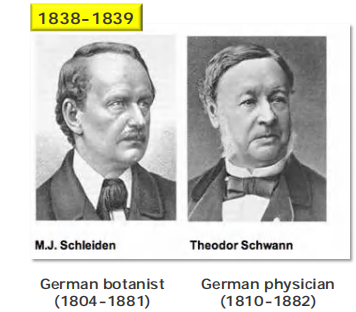
Schleiden & Schwann systematically studied tissues of plants and animals under the microscope and showed:
Cells are the building blocks of all living things.
All cells have similar structure: nucleus and membrane.
Schwann was also famous for the discovery of nerve sheath cells : “Schwann” cells.
4. 1858 - Rudolf Virchow
1 | |
Question:
What is the origin of new cells?
Are new cells from pre-existing cells or is there biogenesis by vitalism?
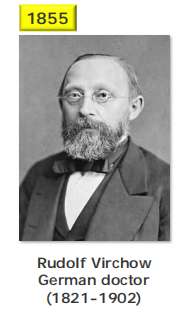
Rudolf Virchow proposed cells are from pre-existing cells:
Omnis cellula e cellula(“all cells (come) from cells”),
but there was no experimental proof, until the discovery of Louis Pasteur
5. 1860 - Louis Pasteur
1 | |
Louis Pasteur disproved the concept of “vitalism”, the spontaneous generation of life, via his famous swan-neck bottle experiment
Experimentally proved that new cells from pre-existing cells
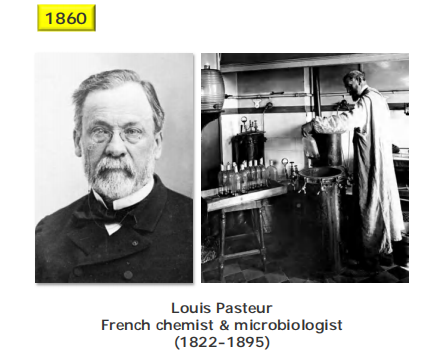
swan neck flask experiment
Louis Pasteur’s key experiment: swan neck flask experiment
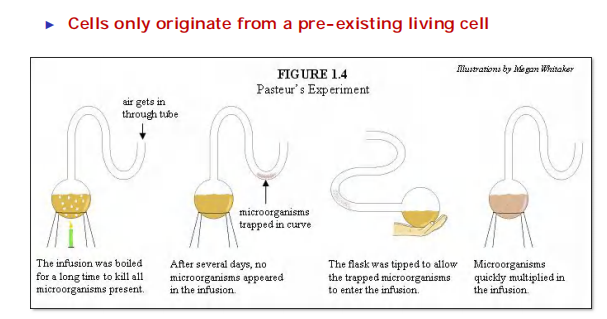
6. 1880 - Eduard Strasburger
1 | |
Eduard Strasburger: cell division in hair cell from a Tradescantia flower (紫鸭跖草花)
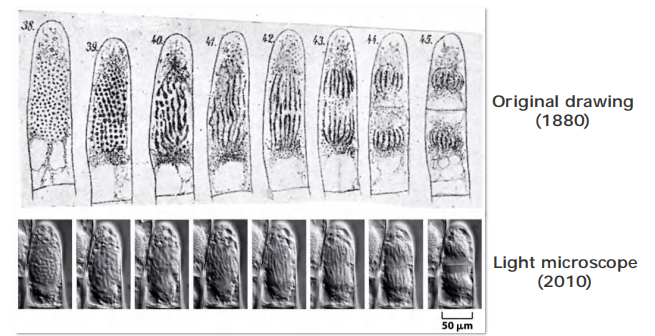
The three tenets
All living organisms are composed of one or more cells.
The cell is basic unit of structure and function for all organisms.
All cells arise only from pre-existing cells by division.
二、Levels of Organization
Cells are “atoms of life”, the least level where organisms are still alive.
We are made entirely of cells and material produced by cells
The levels of organization:
Molecules
- Organelles
- Cells
- Tissues
- Organs
- Organisms
- Populations
- Ecosystems or taxonomic groups
三、Diversity And Unity of Cell
Diversity of cells
1. Size
Prokaryotes: Bacteria and Archaea
Eukaryotes: Animals, Plants, Fungi, Protists (do not have tissues)
For cells, the size matters: The relationship between the radius, surface area, and volume of a cell
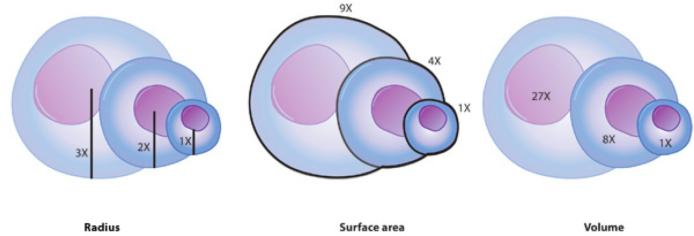
Eukaryotic and prokaryotic cells
- The size of cells varies greatly.
- Most cells are small:
- Prokaryotic: 1-10 µm
- Eukaryotic: 10-100 µm
How do eukaryotic cells handle the large size?
2. Prokaryotes Are The Most Diverse
Prokaryotes are the most diverse and numerous cells on earth:
- Bacteria come in different shape and size.
- Some bacteria are photosynthetic
- Some bacteria get the energy from H2S.

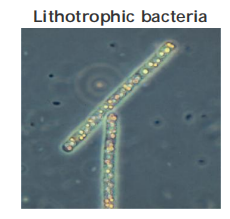
3. Cell Architecture
Eukaryotes have nucleus and organelles
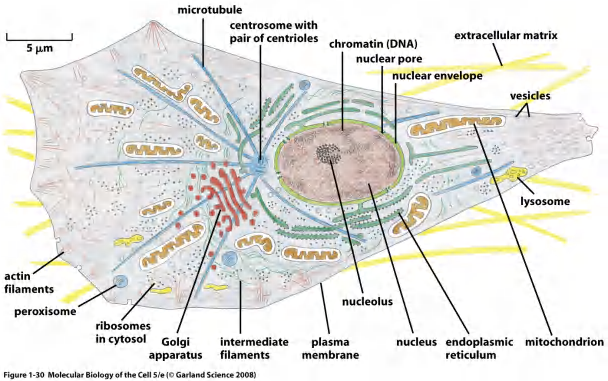
How do eukaryotic cells evolve?
4. Time And Evolution
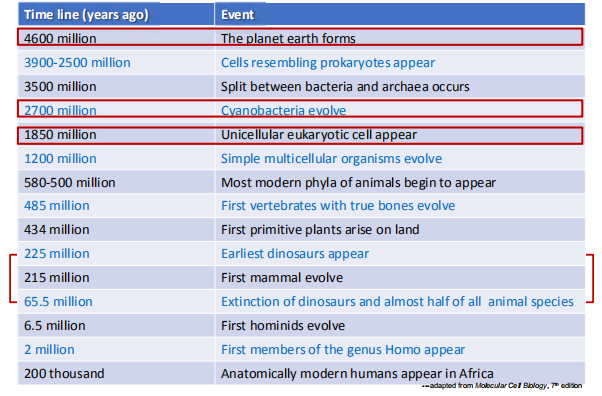
Evolution of eukaryotic cells
It is still a mystery how the primordial eukaryotic cell evolved!
- Eukaryotic cells may have originated as predators.
Organelle genesis:
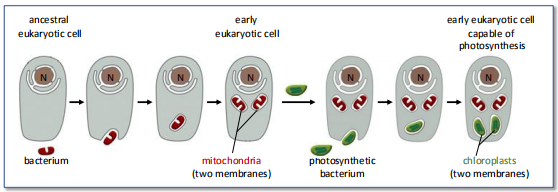
(1) Phagocytosis in eukaryotic cells
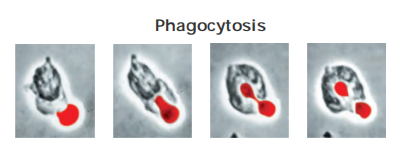
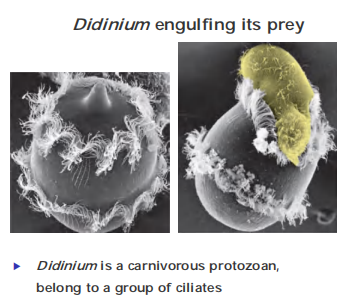
The Unity of Cells
1. The essential characteristics of cells
What defines a cell?
Basically, cells are chemical systems.
Cells are composed of small molecules, from which large polymers are assembled to execute the cell function, but with remarkable constancy.
Nothing in cells disobeys chemical and physical laws.
However, cells are much more complicated than any other known chemical system.
How is this achieved?
2. Genetic Information Determines
Genetic information determines the nature of whole multicellular organisms
The fertilized egg cell contains all required information
Representative genomes
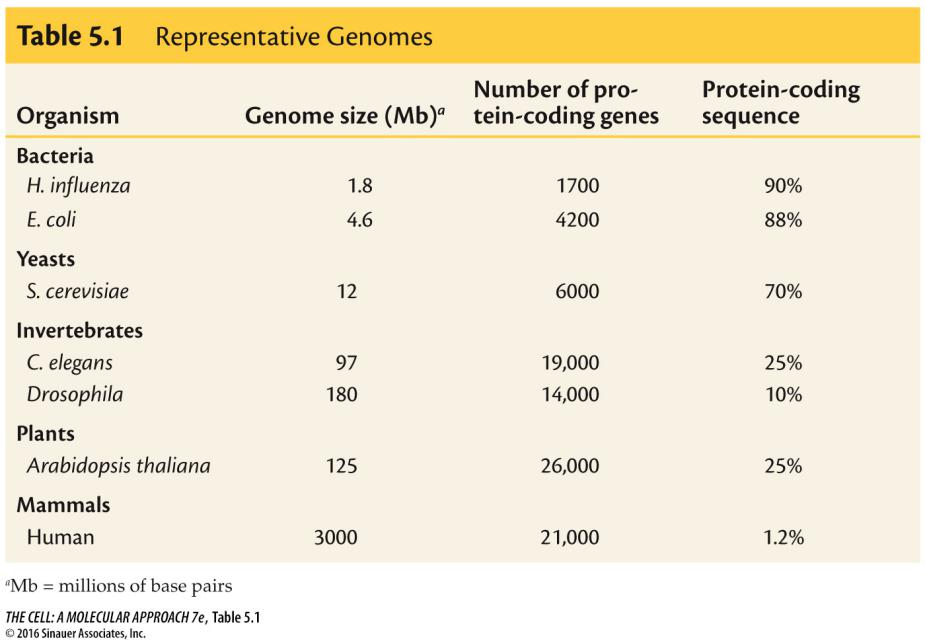
How is the genome expanded?
Four ways of genetic innovation:
- Mutations
- Duplications
- DNA Shuffling
- Horizontal gene transfer (versus vertical transfer from parent to progeny)
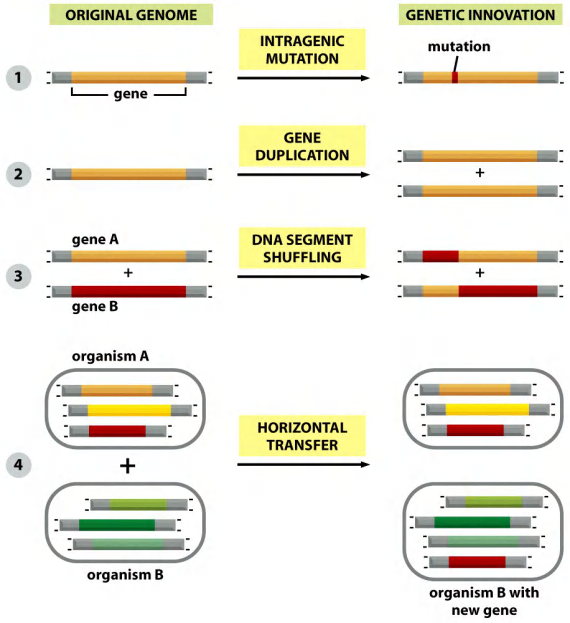
New genes are generated from pre-existing genes
Horizontal gene transfer (HGT)
(1) HGT in Prokaryotic Cells
HGT occurs in prokaryotic cells within the same species or between species

Three ways of horizontal gene transfer:
- Transformation (transfer/uptake of free DNA)
- Conjugation (Cell to cell transfer of plasmid DNA)
- Transduction (Transfer by viral delivery)
(2) HGT in higher organisms
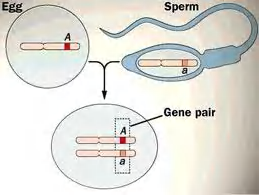
Horizontal gene transfer in higher organisms:
Fusion of sperm cell & egg cell (sexual reproduction)
HGT also occurs in human via virus infection
(3) genes evolve
Some genes evolve rapidly, while others not
Random mutation of DNA occurs during DNA replication : for the better or the worse
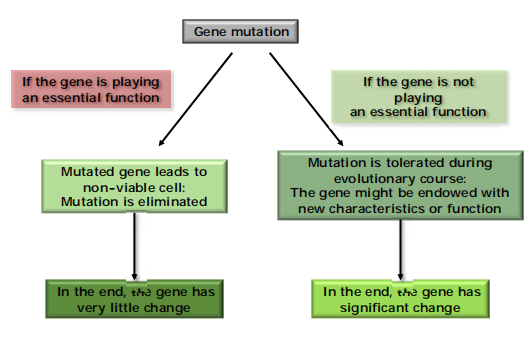
3. The astonishing constancy of all cells
The four points to remember
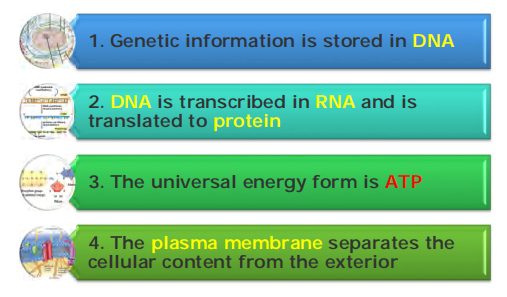
What Functions are achieved? — Domains of cell biology
四、Cell biology contents
How the barrier is assembled? (Membrane assembly)
How do cells uptake raw materials? (Transport across membrane)
How are proteins delivered to the destination? (Intracellular transport)
How do cells harness and convert energy?
How do cells sense their environment? (Communication)
How do cells know when to divide and die? (Cell growth and cell death)
How cells are organized into tissues? (cell-cell, cell-environment connection)
What are functional consequences if these processes are altered? (e.g. Cancer)
Why study cell biology?
1. Basic Science
Cell Biology comprises a variety of activities that discuss basic science:
- Cell shape/morphology
- Cell motility
- Cell growth/proliferation
- Cell division
- Cell death
- Cell differentiation
2. Basic for Disease
All disease states are caused at the cellular level
- Hypercholesterolemia (defective uptake of lipoproteins)
- Cystic fibrosis (misfolding of key protein)
- Diabetes
- Congenital heart defects (errors in cell migration during development)
- Food-borne illness (E. coli)
- Cancer (errors in cell division, growth, migration, etc.)
- Ageing
Cell biology helps to understand cancer
(1) Tumor suppressor: TP53
How can one single protein protect cells from cancer progression?
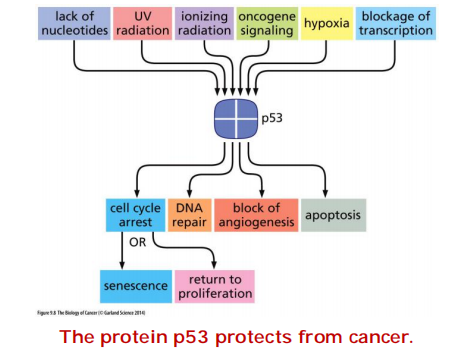
(2) immunotherapy
CD19-specific CAR-T cell therapy
A case of how these cells cure acute lymphocytic leukemia (ALL)
03/2013, New England Journal of Medicine
It was approved by FDA in August 2017
How CAR-T therapy works?
Chimeric Antigen Receptor (CAR): synthetic receptors
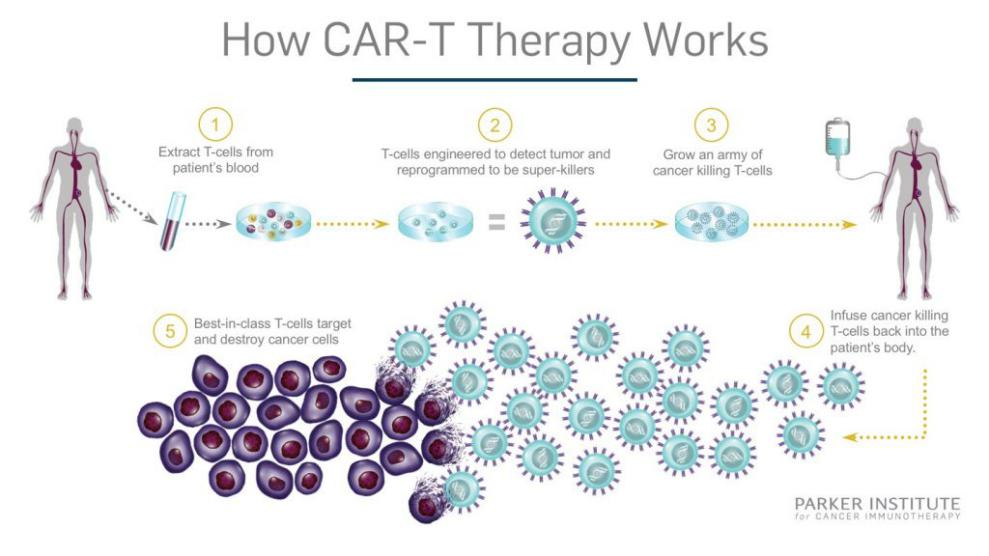
Cell biology helps to develop TCR-T cells and CAR-T cells
(3) Promise and Price of cellular therapy
Engineered immune cells
Tissue-specific stem cells
Organ growth in culture
Cell biology helps to understand human ageing
If you live up to 80 years, you might experience degenerative diseases
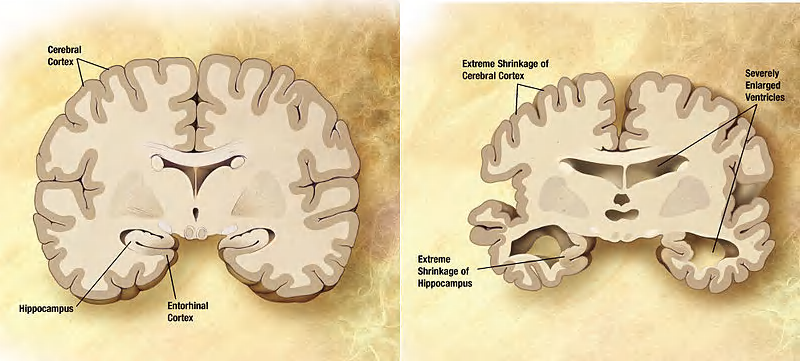
Cause of Alzheimer’s disease remains a mystery, no cure yet
3. Understand of Longevity
Cell biology helps to understand longevity
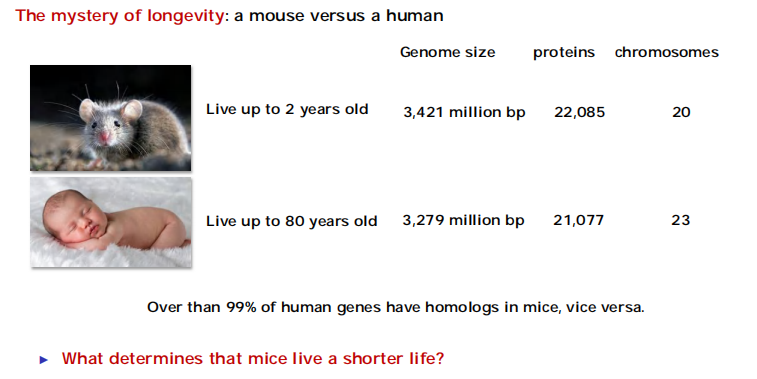
4. make informed decisions on social issues
Genetic engineering of foods
Biotechnology
Stem cell researches
5. The key to success in the course

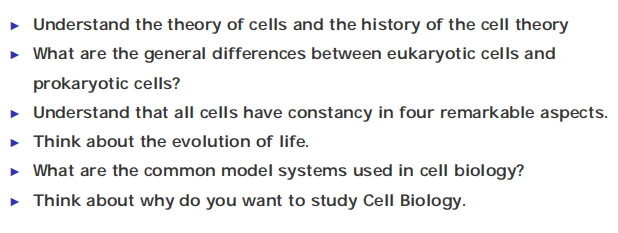
五、Model organisms
The application of model systems to study cell biology
Use of yeast as a model system to study cell division
Use of Caenorhabditis elegans as a model system to study behavior
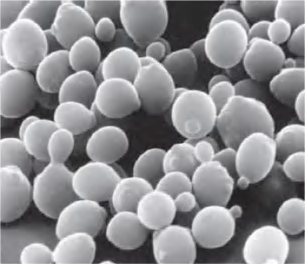

1. Less common model organisms

2. Humans report on our own
- Medical examination
- Self-reporting

Why Model Systems
When choose a model system consider the following:
- Short life cycle
- Easy manipulation
- Costs of the system (the cheaper the better)
- Ethical considerations
- Mutations available
- Size of the genome (the smaller the better)